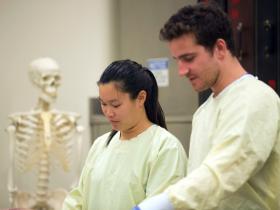Academic Affairs
The Office of Academic Affairs advances the University’s academic priorities, supports cross-college educational initiatives, coordinates development and assessment of academic programs and curricula, identifies and implements effective teaching strategies and technologies, and supports faculty’s assessment of student learning outcomes. In addition, the office provides leadership and support in the area of institutional research, accreditation, academic planning, assessment and regulatory mandates.
Academic Affairs Contact
David Katz, PhD, ABPP
Vice Provost, Academic Affairs
(312) 947-2793
david_katz@rush.edu








